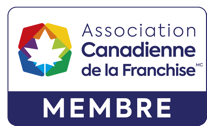In a landmark decision, V.M.Y. v. S.H.G. 2019 ONSC 7279, Ontario courts have recognized a new privacy tort: the tort of placing a person in false light. This is the third recognized privacy tort in Ontario, with interesting potential consequences for privacy litigation.
Before the false light tort, where were we?
With the introduction of social media and easy access to technology, courts have had to balance individuals’ reasonable expectation of privacy with the right to publicly disseminate information.
Courts have been faced with this balancing exercise in various interesting scenarios and have had to determine what conduct is actionable. For example, are the following scenarios considered invasions of privacy?
- An unauthorized access of an individual’s bank records and private financial information(Jones v. Tsige 2012 ONCA 32);
- Non-consensual publishing of intimate videos to pornography sites (Jane Doe 72511 v. Morgan 2018 ONSC 6607);
- Filming an individual running without their consent for promotional material (Vanderveen v. Waterbridge Media Inc. 2017 O.J. No. 6034);
- Accessing and sharing a fellow employee’s work file, including their work schedules (Stevens v. Walsh 2016 ONSC 2418).
Spoiler alert: yes, courts found that all of the above scenarios were invasions of privacy.
However, it is important to note that courts did not have the framework to deal with these kinds of invasions of privacy until relatively recently. Privacy torts are only a relatively recent creation in Canadian law.
It was only in 2012 that the Ontario Court of Appeal recognized the first privacy tort in Jones v. Tsige, known as the tort of intrusion upon seclusion. This tort is meant to deal with scenarios in which private information is accessed without consent and published, including for example financial or employment records.
Between 2016 and 2018, the Ontario Superior Court recognized a second tort: public disclosure of private facts. Most popularly, this tort deals with instances in which an individual publishes intimate videos of his or her partner on the internet without consent.
V.M.Y. v. S.H.G.
In December 2019, Justice Freya Kristjanson recognized a new breed of privacy torts in the context of a family law dispute. In this high conflict divorce and custody matter, the applicant engaged in conduct that was described by the court as a campaign of cyberbullying.
Through two websites and various social media posts, the applicant alleged that the respondent was guilty of kidnapping, abusing, and drugging the parties’ children; that the respondent was engaging in fraud; committing multiple “felonies”; and stealing money from the U.K. government; and that the parties’ daughter was suffering from “autism” and other neurological damage as a result of the respondent’s actions. The applicant’s posts included videos of his access visits with the children without the children’s knowledge, as well as of the state and condition of the respondent’s home.
In addition, the applicant commenced an online petition to start an investigation into the respondent and, in support of the petition, passed out flyers at a church where the respondent was known personally.
The court found that because the majority of the allegations and content posted by the applicant were false in nature, the conduct could not be completely captured by the two established privacy torts in Ontario. For example, while the applicant’s recordings of his access visits with the children and the state of the respondent’s home could arguably be covered by the tort of disclosure of private facts, this would not cover the entirety of the applicant’s conduct.
Tort of false light
To deal with the applicant’s outrageous behaviour, the court recognized for the first time a new privacy tort: the tort of publicly placing a person in false light. In essence, this tort deals with situations in which a defendant publicly portrays a plaintiff in a negative light in a manner that would affect the plaintiff’s reputation.
To be successful, the plaintiff must show that:
- The defendant gave publicity to a matter concerning the plaintiff that puts the plaintiff in a false light;
- The false light in which the other was placed would be highly offensive to a reasonable person; and,
- The defendant had knowledge that the publicized matter was untrue and would place the plaintiff in a false light or acted in reckless disregard of this fact.
It was very clear that the applicant’s published allegations met all three elements of the test.
What about defamation?
It is very clear that the statements made about the respondent in this case were also defamatory. Moreover, the test for the tort of false light somewhat resembles the test for defamation.
To address this point, the Court noted that while the publicized matter is often going to be defamatory, the plaintiff is not required to prove defamation. All the plaintiff must demonstrate is that a reasonable person would find it highly offensive to be publicly misrepresented in the manner done by the defendant. The court stated: “The wrong is in publicly representing someone, not as worse than they are, but as other than they are. The value at stake is respect for a person’s privacy right to control the way they represent themselves to the world.”
In other words, the tort of false light is something beyond defamation.
However, when addressing damages, the court found that the harm suffered by the respondent was similar to cases of defamation and therefore used the factors outlined by the Supreme Court in Hill v. Church of Scientology of Toronto [1995] S.C.J. No. 64, to assess damages.
This analysis raises a lot of questions. First and foremost, how does the tort of false light play into news coverage of public officials? Will similar defences be developed for such news coverage? In the context of damages, will litigants be able to recover damages for both defamation and invasion of privacy for the same publication? Will corporations be able to bring suit for statements that put them under a false light?
While V.M.Y. v. S.H.G. moves privacy law a step in the right direction, it also raises several questions that are, as of yet, unanswered. It will be important to watch how this tort is applied by courts in the future to get a better sense of its scope.
This article was originally published by The Lawyer’s Daily, part of LexisNexis Canada Inc.
At Mills & Mills LLP, our lawyers regularly help clients with a wide range of legal matters including business law, family law, real estate law, estate law, employment law, health law, and tax law. For over 130 years, we have earned a reputation amongst our peers and clients for quality of service and breadth of knowledge. Contact us online or at (416) 863-0125.

 2 St Clair Ave West
2 St Clair Ave West


